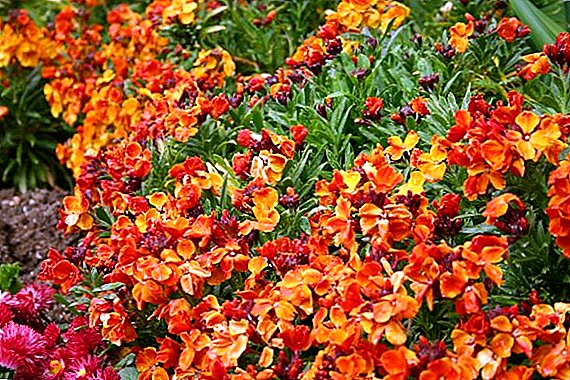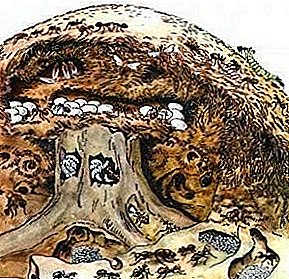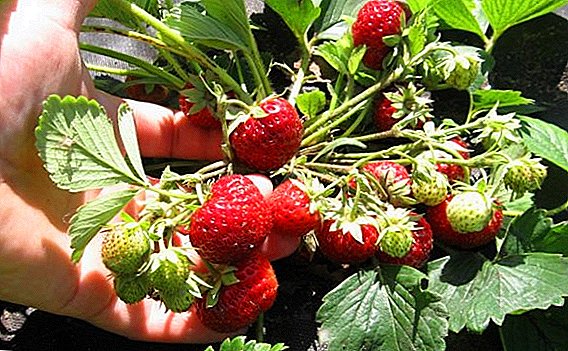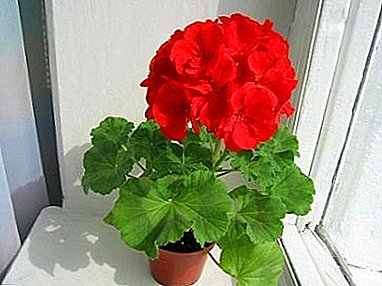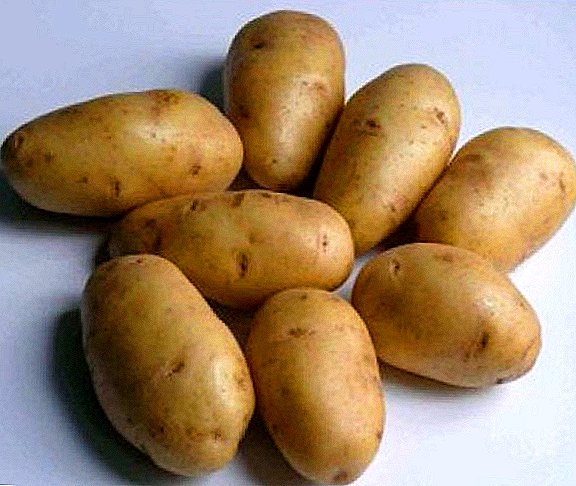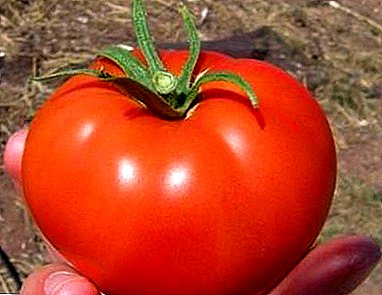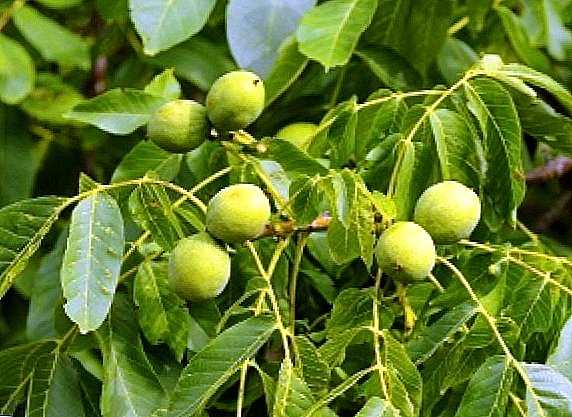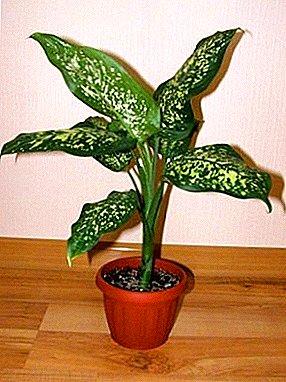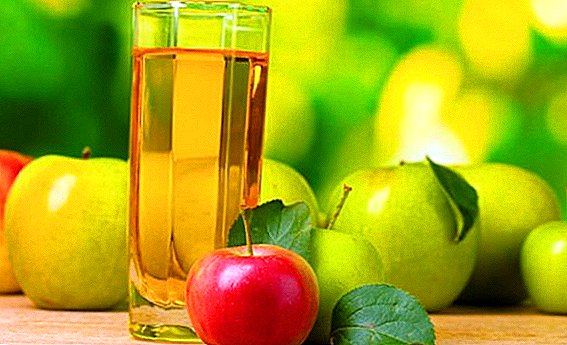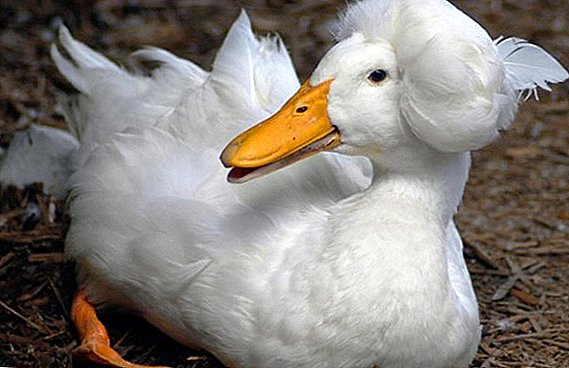 Ducks have long attracted farmers because of their low demand and productivity.
Ducks have long attracted farmers because of their low demand and productivity.
Especially prized poultry meat, healthy and delicate in taste.
Today we consider the popular breeds of white ducks, their characteristics and nuances of rearing.
Why are ducks white
The color of bird feathers depends on the presence of certain pigments and is passed on from generation to generation. Scientists who studied the genetic structure of the Peking duck, conducted a series of analyzes, studying the genes of the descendants of several crossing lines. As a result, it turned out that the recessive gene transmitted to both females and males is responsible for the white color of the plumage in ducks.
Find out why a duck is swimming.
White ducks - breeds
Consider a few popular duck breeds with white plumage, their features and characteristics.
Blagovarskaya white duck
A relatively new cross is the result of the work of technologists of the Bashkir poultry breeding plant. The famous Kazakh medeo hybrid took part in the crossing:
- These are large individuals with a wide chest and back, a bent neck and a large head.
- The tail feathers are collected in a dense bunch and raised up.
- The skin on the legs and beak is saturated yellow-orange color.
- White feathers tightly pressed to the body.

The character of the bovars is balanced, they are active, quickly get used to the new ones in the pack. Main dignity - quick weight gain at relatively low feed rates. Of deficiencies There is a dependence on feed: without balanced mixtures, weight gain is questionable.  Cross attracts poultry farmers from many neighboring countries (Ukraine, Belarus, Kazakhstan and other countries) performance:
Cross attracts poultry farmers from many neighboring countries (Ukraine, Belarus, Kazakhstan and other countries) performance:
- egg production rates - 240 pieces per year, weighing 95 grams;
- meat indices - by the age of two months the weight of the female is 3.4 kg, the male is 3.7 kg.
Important! If the skin of the bird has become much paler, it speaks of errors in the diet or content, of a possible beginning disease.
Moscow white ducks
The Moscow duck is the result of the crossing of the English khaki campbell and peking. The main advantages of the breed - strong immunity, high productivity, resistance to temperature changes. She needs walking and winter, because the bird loves to walk and even swim in the snow. It is widely distributed throughout the post-Soviet space, which makes it affordable and at purchase price.
The bird has a large body with a massive convex chest, a strong straight back and a short tail, several tail feathers are bent by a ring near the drake. Big head with a beak of dark pink color, the skin of the paws is orange.  Productivity:
Productivity:
- weight - 3.5 kg female, male - 4 kg, ready for slaughter at the age of two months;
- egg production - up to 150 pieces per year, weighing 90 grams.
Did you know? In Russian and Ukrainian folk songs, poems and fairy tales, duck and drake are often featured as a love couple, heralds and just positive characters helping the main character. In everyday life, the image of a bird often decorated dishes, textiles and even the roof of houses in the form of skates.
Aylesbury
The history of the breed begins in 1845 in England. The meat breed quickly gained popularity and spread throughout Europe and beyond.  The snow-white bird with blue eyes has a large body, broad chest and back. The head is large, powerful beak, wide, light orange. Paws shortish, but strong and widely spaced. The skin on the legs is bright orange.
The snow-white bird with blue eyes has a large body, broad chest and back. The head is large, powerful beak, wide, light orange. Paws shortish, but strong and widely spaced. The skin on the legs is bright orange.
It is interesting to get acquainted with the breeds of pets with white color: chickens, rabbits.
Advantages consist in a quick weight gain, an excellent instinct for hatching. Ducks are bred for meat in England, European countries, in the CIS.  Productivity:
Productivity:
- weight of adult birds - female weighs 3.5 kg, male 5.5 kg;
- egg production - up to 95 pieces per year, weighing up to 90 grams.
Did you know? According to the Kirghiz beliefs, the prophet's daughter-in-law violated his ban and bathed in the lake. The punishment was its transformation into a red duck - the fire.
Crested duck
The history of the appearance of the crested insects is not fully known; they are presumably obtained by crossing local breeds with Chinese crested.  Medium-sized bird, with a convex back, leaning about the neck down. The bird is muscular, with a convex chest, long wings pressed to the body. In white crested insects of orange color beak and paws. The crest on the head according to the observations of poultry farmers affects the productivity of poultry: the more it is, the less productivity. In spite of this, the crust has a tasty, lean meat, good egg production and a calm character.
Medium-sized bird, with a convex back, leaning about the neck down. The bird is muscular, with a convex chest, long wings pressed to the body. In white crested insects of orange color beak and paws. The crest on the head according to the observations of poultry farmers affects the productivity of poultry: the more it is, the less productivity. In spite of this, the crust has a tasty, lean meat, good egg production and a calm character.  Productivity:
Productivity:
- eggs are carried all year round, weighing up to 70 grams, the number of an average of 120 pieces;
- female weight - 2.5 kg, drake - 3 kg.
Read also about crested breeds of chickens.
Indian runners
According to scientists, the breed is descended from penguin ducks. Runners were brought to Europe in the 19th century and were first bred in zoos as decorative birds. Runners are now valued for high egg productivity (they are not grown for meat) in European countries, including Ukraine and Russia.  The runner's stretched body truly resembles a penguin:
The runner's stretched body truly resembles a penguin:
- snow-white feathers fit snugly to the cylindrical body;
- head elongated;
- the neck is thin and long;
- beak and paws of dark yellow color.
 Birds are unpretentious in nutrition, peace-loving, the meat is delicious, tender, but the runners are the egg direction, since they do not gain much weight. An adult male weighs an average of two kilograms, but egg production is impressive - up to 350 eggs weighing an average of 70 grams per year.
Birds are unpretentious in nutrition, peace-loving, the meat is delicious, tender, but the runners are the egg direction, since they do not gain much weight. An adult male weighs an average of two kilograms, but egg production is impressive - up to 350 eggs weighing an average of 70 grams per year.
Learn more about the Indian runner duck breed.
Beijing
The breed was bred in China in the eighteenth century. Due to its excellent characteristics, it has since been leading in the meat sector of the poultry industry in both Asian and European countries. The disadvantage is excessive nervousness of birds.  Features:
Features:
- A large body of slightly elongated shape, wide back and chest.
- Big head with a concave frontal part on a long curved neck.
- The snow-white feathers fit snugly to the body, the tail is short, raised.
- The paws are short, but strong, yellow-orange in color, as is the beak.
 Productivity:
Productivity:
- the weight of a duck is up to 3.9 kg, and the drake is up to 4.2 kg;
- egg production an average of 120 eggs per year, the weight of one to 90 grams.
Important! In order for the pekinka not to announce the district with hysterical cries, it is necessary to remove the source of irritation. This may be noise, and even domestic animals that have wandered into their territory, may be poor-quality food.
Features of growing ducks at home
Let's understand the main tricks of growing ducks:
- the room is insulated, without cracks and holes, without drafts;
- placement - per square meter not more than three adults and six young individuals;
- litter - deep (30 cm), ideal material flax trust, sawdust, shavings;
- nests are located under the walls in the shade, the average size of 40x50x50, porozhek about 8 cm in height;
- the calculated number of feeders for several compartments for different types of food;
- drinkers with fresh water;
- temperature - 16 degrees, in winter should not be below 5 degrees;
- humidity - 60-70%;
- lighting - fourteen hours a day, in the winter artificial light;
- in the summertime, the drinkers and the feeders are taken out onto the street;
- the presence of a reservoir;
- in winter, walking on windless days;
- the room is kept clean, regular bedding is replaced.
Learn more about duck maintenance: building your own duck shed and pond; making nests and feeders; feeding features of ducks and ducklings.
With cell content they are placed in several tiers. It is necessary to think over a solid floor so that the paws of the bird do not fall through or be damaged. Cellular content is best suited for meat breeds: the less they move, the faster they gain weight.  In conclusion: cleanliness in the room is the key to poultry health. Dirt on the plumage exposes the bird to overcooling, which is fraught with disease. Do not forget that ducks are waterfowl, they need a reservoir on a walking yard.
In conclusion: cleanliness in the room is the key to poultry health. Dirt on the plumage exposes the bird to overcooling, which is fraught with disease. Do not forget that ducks are waterfowl, they need a reservoir on a walking yard.


